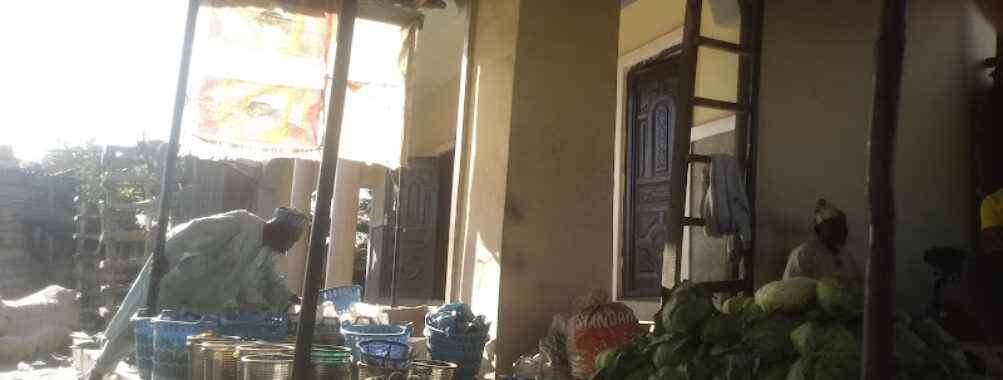
Gomboru Market
“`html
Table of Contents
Description
Gomboru Market in Maiduguri, Borno State, is one of those places that feels alive from the moment you step in. It’s not just a trading hub—it’s a living, breathing part of the city’s daily rhythm. The market sprawls across a wide area, packed with stalls selling everything from grains and textiles to handcrafted goods and local delicacies. You’ll find merchants calling out prices, customers bargaining with friendly persistence, and the scent of roasted corn wafting through the air. It’s chaotic, yes, but in the best possible way.
What makes Gomboru Market truly fascinating is its role as both a local necessity and a traveler’s curiosity. It’s a place where you can experience the real Maiduguri—unfiltered and genuine. The market has seen its share of ups and downs, yet it continues to thrive, a testament to the resilience and entrepreneurial spirit of the people here. Some travelers might find it overwhelming at first (I definitely did on my first visit), but once you let yourself get lost in the maze of stalls, it becomes oddly comforting. And honestly, that’s part of its charm.
Accessibility-wise, Gomboru Market has made strides in inclusivity. There’s wheelchair access at the entrance, designated parking, and even accessible restrooms—something that’s still not common in many markets around Nigeria. Payments are flexible too; you can pay with cash, card, or even mobile transfers. That’s a relief for travelers like me who never seem to have enough local currency on hand.
It’s not a polished, touristy market, and that’s exactly why it’s worth visiting. You’ll see real interactions, real commerce, and real community. There’s a certain honesty here that’s hard to find in more curated destinations. It’s not perfect—some areas can get muddy after rain, and the noise might catch you off guard—but those imperfections are part of what makes it memorable.
Key Features
- Large open-air market offering grains, fabrics, spices, and traditional goods.
- Wheelchair-accessible facilities, including restrooms and parking.
- Flexible payment options: cash, credit cards, debit cards, and mobile transfers.
- Friendly local traders known for their storytelling and negotiation skills.
- Fresh local produce and street food stalls offering authentic northern Nigerian flavors.
- Strong community atmosphere with a mix of locals and travelers exchanging cultures.
- Security presence and organized sections for different goods, making navigation easier.
Best Time to Visit
If you ask locals, they’ll tell you mornings are the best time to visit Gomboru Market. The air is cooler, the traders are in good spirits, and you can snag the freshest produce before the afternoon rush. The market tends to get crowded later in the day, especially on weekends and during festive seasons. Personally, I like visiting mid-morning—around 9 or 10 AM—when the energy is high but not overwhelming.
Weather-wise, the dry season (roughly November to March) is the most comfortable period to explore. The rains can make some areas muddy, and while that doesn’t stop business, it might make walking around less enjoyable. If you’re into photography, the golden hour in the late afternoon gives the market a beautiful warm glow that’s perfect for candid shots. Just remember to ask before taking pictures—people here appreciate that courtesy.
How to Get There
Reaching Gomboru Market is fairly straightforward once you’re in Maiduguri. Most local taxis know the place well—it’s a landmark in its own right. From the city center, it’s just a short ride, and you’ll likely share the road with colorful tricycles and carts piled high with goods. If you’re staying in a hotel, you can ask the staff to arrange a driver who knows the area.
Public transport options like keke (tricycle taxis) are also available, though I’d recommend hiring one privately if it’s your first time. The roads leading to the market are usually busy, but that’s part of the experience—you’ll pass through everyday scenes of Maiduguri life. And once you arrive, be prepared for the sensory overload: the sounds, the colors, the sheer energy. It’s all part of what makes the trip worthwhile.
Tips for Visiting
A few pieces of advice from someone who’s been there (and learned the hard way): wear comfortable shoes. You’ll do a lot of walking, and the ground can be uneven. Bring a hat or scarf too—the sun doesn’t play nice in Maiduguri. And while the market is generally safe, it’s smart to keep your belongings close and avoid flashing valuables.
Haggling is expected here, but keep it friendly. The traders appreciate humor and conversation—it’s part of the dance of doing business. If you show genuine interest in their products, they’ll often throw in a little extra or share stories about where their goods come from. That’s how I ended up with a small bag of dried hibiscus flowers after chatting with a spice seller for twenty minutes.
If you’re sensitive to noise or crowds, go early or on a weekday. And don’t skip the food stalls! The suya (spiced grilled meat) and masa (rice cakes) are worth every bite. Just make sure to buy from vendors with steady customer traffic—it’s a good indicator of freshness.
Lastly, take your time. Gomboru Market isn’t a place to rush through. It’s a place to wander, observe, and connect. You’ll leave with more than just souvenirs—you’ll carry a piece of Maiduguri’s spirit with you. And honestly, that’s what travel should be about.
“`
Location
Places to Stay Near Gomboru Market
Find and Book a Tour
Explore More Travel Guides
No reviews found! Be the first to review!